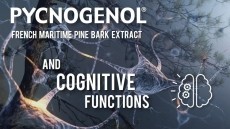Taurine’s eye-health benefits ‘very promising’ for functional food applications – China review

Although supplementation with appropriate doses of taurine, a natural amino acid, has been reported to relieve visual fatigue, there is a lack of evaluation on its application in functional foods.
As such, some Chinese researchers have conducted a systematic review to summarise taurine’s mechanisms of action and safety of consumption to provide basis for further development and application of this nutrient.
Normal retinal function is essential for maintaining vision and eye health. Studies have shown that visual fatigue is mainly caused by a decline or impairment of retinal function.
When the eye is overused, excessive metabolic waste accumulates in the eye and results in various stress injuries to the retina or macula, and damage to nerve cells.
According to research findings, taurine has an important protective effect on retinal function. It shields retinal photoreceptors, retinal ganglion cells (RGC), and retinal pigment epithelium (RPE) cells from oxidative stress damage, inflammation, apoptosis, and ocular neurotoxicity through various pathways, thereby reducing visual fatigue.
Taurine can be obtained from two sources — endogenous metabolic synthesis in the body and the exogenous dietary route.
“As the amount of taurine synthesised by the human body is not sufficient to meet health needs, it needs to be obtained through dietary supplementation,” the authors wrote.
In addition, numerous studies have stated that depletion of taurine may impair retinal function and even lead to serious eye conditions.
“Its depletion increases the susceptibility of the retina to light-exposure damage as well as glial cell proliferation and oxidative stress in the retina. Taurine supplementation is effective in improving retinal photoreceptor degeneration, and retinal and optic nerve damage.”
Formulation strategies
The main dietary sources of taurine come from animals, especially seafood, which contain high concentrations of taurine in their organs and tissues.
Seaweeds such as kelp and spirulina, and plants like Ganoderma lucidum spores, wolfberries and cordyceps also contain some taurine.
Toxicity studies done on taurine have verified that it is not carcinogenic, genotoxic (damaging to DNA), nor teratogenic (something that can cause or raise the risk of a birth defect).
“Taurine’s high-safety profile has allowed it to be added to functional food and drink products in many countries. In future development of functional foods for the relief of visual fatigue, further research on the synergistic effect of taurine in combination with other ingredients is necessary. This would help clarify the optimal formulation ratio between taurine and other functional ingredients, so as to maximise the benefits of the products,” said the authors.
Furthermore, this review found that both chemical synthesis and bio-fermentation methods are suitable for the industrial production of taurine of high purity, but each has certain disadvantages.
Extraction methods, on the other hand, are not recommended for the industrial production of higher-purity taurine, but are of “great importance” for the development of functional food ingredients.
“When a taurine-rich food is consumed, digestion, absorption and metabolism need to take place in order to replenish the body with the required amount of taurine. This suggests that it is not only the level of taurine content in food that is important, but also the relationship between dose and efficacy.
“Appropriate selection of ingredients and extraction methods can effectively increase taurine content in raw materials, enhance utilisation of raw materials, improve novelty of product formulations, and facilitate researchers to diversify the design of dosage forms,” the authors concluded.
Source: Nutrients
https://doi.org/10.3390/nu15081843
“Taurine: A Source and Application for the Relief of Visual Fatigue”
Authors: Hao Duan, et al






















